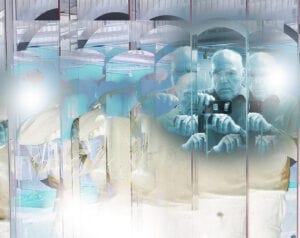Archaeologist presents discoveries from space at science forum
On Friday, Devin A. White, Ph.D, spoke about archaeological discoveries from space for UT’s Science Forum at the Thompson Bowling Arena. White is the Senior Research Scientist in Geo-computation at Oak Ridge National Laboratory and an assistant professor of Anthropology at UT.
He explained satellite remote sensing, a technique which influences archaeological research.
“Satellite remote sensing is basically gathering data from a distance and making sense of it,” White said.
White said he believes that technology has made this the best time to be an Archaeologist. Archaeologists now use cameras on airplanes, weather balloons, remote controlled drones and satellites in space.
“Archaeologists have always been interested in a bird’s eye view,” White said.
Satellites have not always been used in the field. During the 1960’s, archaeologists at the University of Arkansas repurposed a satellite called Corona. Corona captured images of the Fertile Crescent, which scientist use to see how humans have altered that landscape over time.
“These images gave researchers the ability to see into the past and decipher how the land was interconnected by an ancient road system,” White said.
White explained two types of remote sensing used to find hidden structures on Earth. One is spectral remote sensing and the other is LIDAR. Spectral remote sensing uses a camera to take pictures of the visible electromagnetic spectrum to gather pieces of images that archaeologists then put back together to form a clear picture. This method revealed new structures, such as ancient Mayan ruins and a previously undiscovered pyramid in Egypt.
LIDAR, a name formed by combining light with radar, sends a laser beam to the ground to simulate echo location and a computer produces an image based on how long it takes the beam to return to the sensor. Through this process scientists determined that the ancient Mayan site of Caracol was much larger than researchers previously believed. Farmland and roadways were discovered through LIDAR imaging that revealed about a 100,000 kilometer diameter spread that researchers had not known existed.
The UT Science Forum will feature Phil Colclough, Director of Animal Collections and Conservation at the Knoxville Zoological Gardens on Nov. 15 for his presentation of the Eastern Hellbender Conservation and the New Role of Zoos.
Edited by Nichole Stevens



